EA Types 30 to 39


EA Type 30
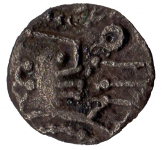
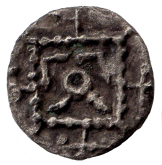
EMC 2015.0398
The forehead/nose, eye, cheek, lips and ear all appear typical of an R8 obverse. This type of R8 coins have the runes EA their tops point outwards, they are read in a clockwise direction reading down from the top. The coins of the type 30 group have quite crudely executed artwork and are often struck off centre. Specimens have the typical LOLII standard. Like the obverse of this type the reverse is very crudely executed. There were eight coins in this type. Three were found in Norfolk, ID 33 weighing 0.73g, ID 49 weighing 0.91g and ID 50 weighing 0.99g. Three were found in Cambridgeshire, ID 58 no weight, ID 63 weighing 1.00g and ID 65 weighing 0.84g. One was found in Suffolk ID 47 weighing 1.11g and one found in Lincolnshire ID 48 weighing 0.89g. The average weight of Type 30 coins was 0.935g.
See further example of this type of coin on the Subjack Collection Observation page.
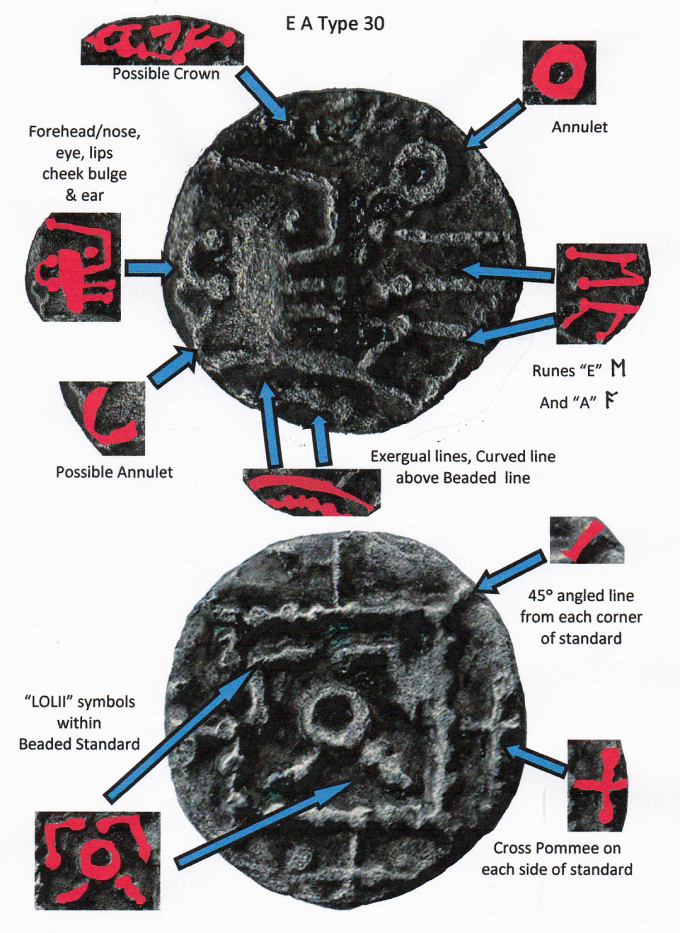
EA Type 31
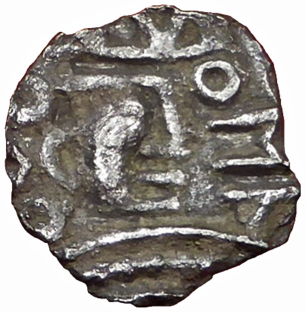
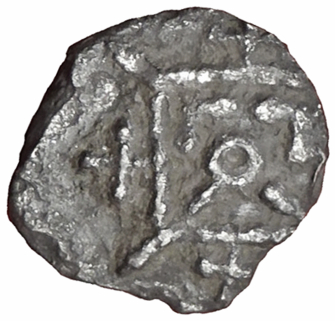
Pictured above is an R8 Sceat with very unusual reverse symbols. On the reverse of an R8 Sceatta it is usual to find a “Cross Pommée” protruding outwards mid-point from each of the four sides of the Standard. On this coin the crosses have a large pellet each side of them. Although it is not possible to see each cross as the strike on the reverse flan is offset I think it reasonable to assume that this format of symbols is mirrored on each side.
I have studied all of the 79 R8 images on the EMC Fitzwilliam Database and cannot find a similar image with the large pellets, neither can I with the 22 images in Gannon’s British Museum Sylloge 63 or with the 7 images in T&S in the Ashmolean Museum by Metcalf.
During the "Lockdown" of 2020 I was surprised to see another coin with a similar configuration of symbols on the reverse which I subsequently added to my collection. For more details see the page describing the Type 40 to 49 sceatta on this website.
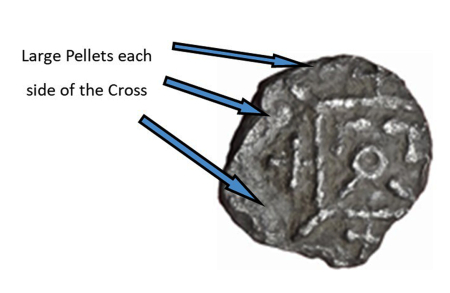
The coin appears to have the runes EA. The runes have their tops pointing outwards. On the irregularly shaped coin the runes are clearly EA with the bottom rune, the A having its top extending over the edge of the flan. This coin also has a crown visible, this is unusual but not unknown with an R8 type. This coin has been allocated the designation of “Type 31”.
All aspects of the obverse, apart from the "Crown", appear to be the same as a "Type 30" coin. This Type 31 coin was found in Cambridgeshire, weighs 0.68g and has a die axis of 90°. It is registered with the EMC 2019.0091. It was not part of the original survey.
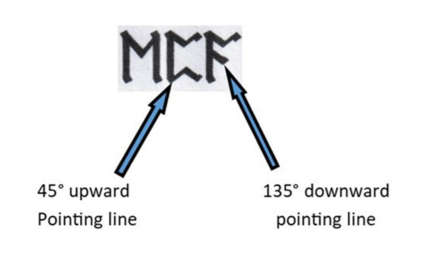
EA Type 32
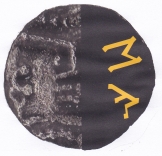
Image only shows position of Runes. To see image of actual coin see image number 1999.0006 Early Medieval Corpus on-line database at the Fitzwilliam Museum Cambridge.
The runes EA read in a clockwise direction and their tops point outwards, the nose is pointed. On the reverse there is a crown on the top of the standard, other features are typical of the LOLII design with the exception of a pellet within the standard. This single coin was found in Norfolk ID 37 and weighed 0.96g.
+EA Type 35
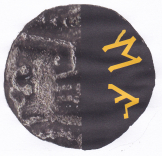
T&S Plate 24/412 HCR 20780
To view image of coin see. http://hcr.ashmus.ox.ac.uk/coin/
This type has the runes +EA reading clockwise and are pointing outwards, there is a spur on the first element the E runeThe head/nose is of a rectangular design and the reverse is a typical LOLII configuration. All three coins of this type were found in Norfolk, ID 8 weighed 0.73g, ID 46 weighed 0.92g and ID 54 weighed 0.66g. The average weight of the three coins was 0.77g.
+EA Type 37
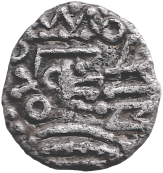
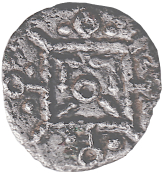
Timms Collection Type R8/37
This type has the runes +EA reading clockwise and are pointing outwards, there is a spur on the first element the E rune. The head/nose is of a rectangular design, however the head has a three point crown above it with a downward pointing back to the head. This is very unusual for an R8 Sceat. It has annulets in the usual places, above the runes at the front of the head and above and below the horizontal chevron behind the head, expected on an R8 Sceat. There are aslo two large pellets behind the bottom annulet. On the reverse there is the usual configuration of symbols within the standard, however, outside the standard the usual crosses (pommèe) do not end in a pellet but a large annulet. The line ending in an annulet has a pellet either side of it similar to the unbarred ceosses seen on the reverse of the R3 Sceat.The only other examples I have seen are two coins catalogued in Gannon's Sylloge 63 (673/4).This coin is not a die match with those. This coin was found at Ford End near Chelmsford in Essex, it weighs 0.81g and has a die axis of 180°. This coin was not included in the initial survey having been purchased subsequently.






